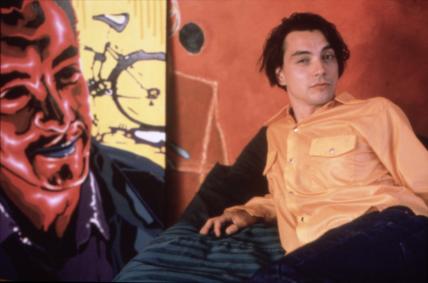Nepal, like every other South East Asian nation, is a land in which its people are governed by a centuries old caste system. People are born into a way of life that was decided for them by rules imposed on their ancestors and are doomed into this existence until death. In Stephanie Spray’s film “As Long As There’s Breath,” we discover a family of “untouchables,” the lowest caste in the system, and how a son who successfully manages to escape his fate is driving his family apart.
Spray visited our final class this week to unofficially debut her latest film (albeit to an audience of 7) in a series of works on the migrant working class of Nepal. Spray is a delightful (I use that word often in my blogs, huh?) young PhD candidate from the same Harvard program that has fostered such visual ethnographic talents as my professor and J.P. Sniadecki (whose work I reviewed here). Her previous work in the region over the past 10 years allowed her to build a rapport with a cultural sect that is invisible to media attention. Spray also worked with the Gayek family in two of her previous films, “Kale and Kale” (2007) and “Monsoon Reflections” (2008). Her personal connection with the family granted her access into their home, privileging her to conversations and moments normally held only in private.
The Gayek family lives in a small home on the outskirts of town. The film opens up with a young boy searching through his belongings, which is nothing more than a bed covered by tattered mosquito netting. Nearly 5 minutes pass before dialogue is introduced and the audience never discovers what he is looking for, but Spray insists that the sound of breath and ruffling sheets in this dimly lit room is the best introduction to her subjects. In the next scene, we’re introduced to the rest of the family and learn that the young boy in the opening sequence is one of the sons, but not the one we’re looking for. Their eldest ran off to join the Maoists, tearing the tight nuclear family apart and leaving them constantly worrying about his wellbeing. We spend the remainder of the film hoping he comes back, for, as one character claims, “as long as there’s breath, there’s hope.”
Spray’s conscious framing also delineates a sense of longing. Her subjects almost seem to be posing for her, often shooting her subjects in casual settings as their gaze lingers off screen. The film is devoid of fancy editing and mashes together 23 long shots collected over several months. Much of what we watch are the everyday travails that plague the Nepali family: work, food and family wellbeing. The women take whatever day labor work in the fields they can get while the men stay at home. We watch them as they prepare for work, fixing their hair while they talk about the benefits of having hairless armpits. In several scenes we overhear the women discussing the laziness of the men – including one in which the women, silhouetted against the lush green forest abutting their home, discuss the benefits of pleasuring themselves with electric dildos.















